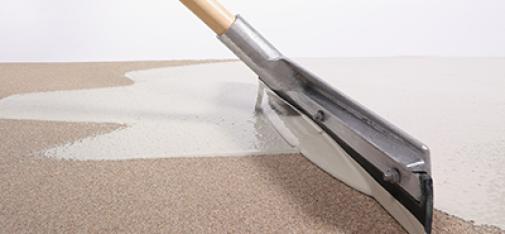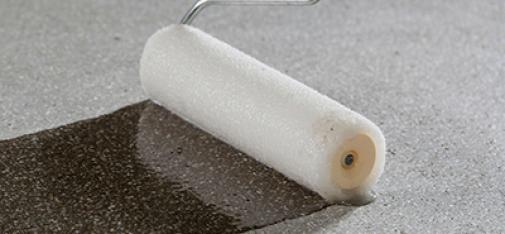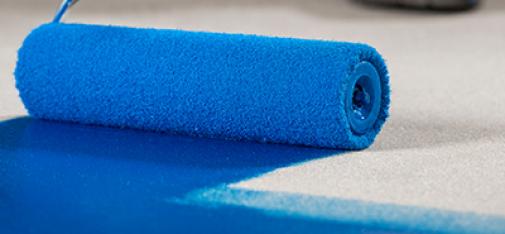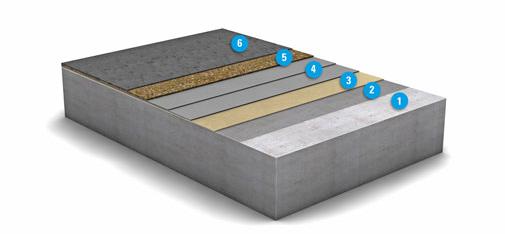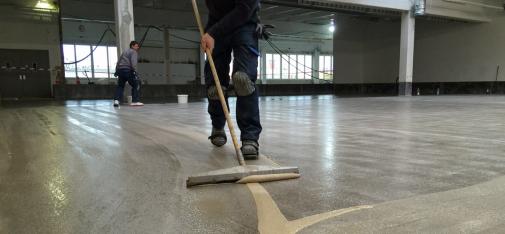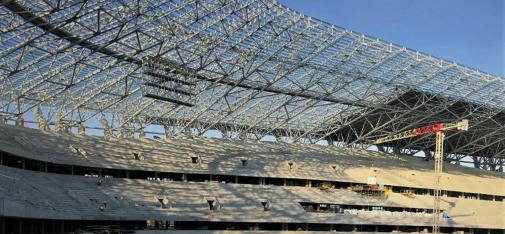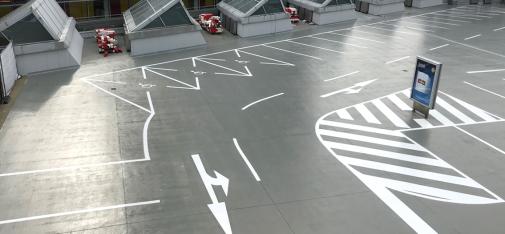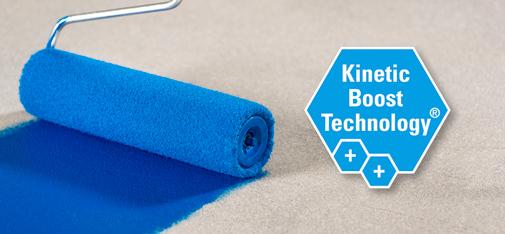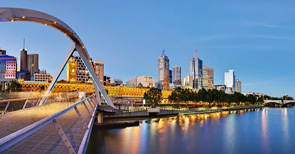“All the components of the KineticBoost-Technology® system use ambient moisture to boost the curing process. KineticBoost-Technology® also increases the adhesion, abrasion resistance and scratch resistance of the coating.”
-

What is the KineticBoost-Technology?
MC-Bauchemie has developed a new technology that can also be used in such adverse conditions, facilitating the fast laying of aesthetically attractive and durable floors.
KineticBoost-Technology – the new benchmark for floor coatings
Oct 27, 2020
Whether in industry, multi-storey car parks, retail stores or new build constructions, the demands placed on floor-laying are as varied as the floor usage profiles themselves. Yet many established epoxy, PU and PMMA systems reach their limits in adverse environmental conditions such as the presence of moisture or excessively high or low temperatures. MC-Bauchemie has developed a new technology that can also be used in such adverse conditions, facilitating the fast laying of aesthetically attractive and durable floors.

Advantages and disadvantages of common floor coatings
Reaction resin-based floor coatings offer longer service lifetimes than mineral floors, can be laid joint-free and are impact-, scratch- and shock-resistant. With their completely smooth surface, they can be kept clean even under difficult hygienic conditions. In addition, they are exceptionally resistant to a variety of chemicals and are extensively immune to high temperature fluctuations, such as can occur in food processing plants. The reaction resin-based liquid plastics in question are supplied and applied in the form of 1-, 2- or multi-component products. While 1-component products usually harden due to the humidity in the air, 2-component and multi-component products undergo a chemical reaction between the base resin and a hardener or catalyst in the liquid plastic. After a certain reaction time, the liquid plastic cures to provide a seamless sealant over wide areas. In general, it can be said that a PMMAbased liquid plastic reacts particularly quickly, epoxy resins are characterized by their high mechanical and chemical resistance, while polyurethanes (PU) exhibit elastic properties. Such products can therefore be used in a wide range of applications – from decorative and design flooring to extremely hard-wearing and chemical-resistant industrial floors. However, they all have one disadvantage in common: In the presence of moisture, the hardening process is invariably accompanied by disruptive side reactions.
Disruptive side reactions
When exposed to moisture and carbon dioxide, epoxy resins form solid white carbamate, while the catalyst of the PMMAs can disassociate and lose its effect. Within polyurethanes, the isocyanate component reacts with water to form CO2 , and this in turn can lead to undesired bubble formation within the coating (see diagram below). Hence the application of classic reactive resin coatings under conditions of high humidity (> 80% RH) is highly problematic. Since these conditions can arise in many regions of the world, planners, builders and applicators alike are frequently frustrated as coating work falls behind schedule.
The solution: MC-DUR TopSpeed
In order to solve the problem of restricted application possibilities, MC has developed MC-DUR TopSpeed, a special resin system for flooring in industry and building construction with the specific advantage of suitability for use under adverse environmental conditions. This innovative coating system is based on a new special binder chemistry featuring KineticBoost-Technology®. It enables coating work even in high humidity and in the presence of moisture in the substrate, combined with a wider temperature range from 2 to 35 °C. With MC-DUR TopSpeed, both interior and exterior industrial floors can be primed and coated within a few hours and then fully loaded after no more than a brief curing period.
KineticBoost-Technology® explained
The accelerated hardening of MC-DUR TopSpeed is the result of the KineticBoost-Technology® developed by MC. The kinetic reactivity of the system is altered so that the water is trapped by the special binder and a catalytically active species is formed. The intercept reaction combined with extreme acceleration means that the water is prevented from reacting with the isocyanate groups. Since the reactivity of such coating materials remains virtually unchanged even at low ambient temperatures, MC-DUR TopSpeed can be safely applied even at high humidity and low temperatures just above freezing. This also means that there is no more freeze-thaw sensitivity and no squinting at the hygrometer. Plus, due to the speed with which the coating dries and the fact that it is rainproof within 30 minutes, the otherwise often significant risk of precipitation can be almost ignored.
Fast coating application, reduced cost
All the components of the KineticBoost-Technology® system use ambient moisture to boost the curing process. KineticBoost-Technology® also increases the adhesion, abrasion resistance and scratch resistance of the coating. A coating job can be completed from start to finish in one day, enabling planners to save their clients time and money, not least because of the fewer trips to site. In addition, work can also be carried out under poor weather conditions without the area having to be enclosed or heated. Moreover, such coating can also be carried out with revenue-earning operations still ongoing, as the following examples show.
More scope in floor coating
Epoxy-, polyurethane- and PMMAbased coating systems reach their limits in the presence of moisture or in excessively high or low temperatures. MC-Bauchemie's new reactive resins based on KineticBoost-Technology®, on the other hand, extend the range of applications for floor coating. They enable safe, fast coating even under critical environmental conditions such as low temperatures down to 2 °C, high temperatures up to 35 °C, high humidity, and moisture in the substrate. All the system components use ambient moisture to boost the curing process. This ensures very good adhesion to all concrete and screed substrates and exceptionally high mechanical wear resistance. Planners, investors, developers and applicators thus have more scope for floor-laying in industry and in building construction.
Excellent results in DAT test
In a driving abrasion test (DAT), Kaiserslautern University of Science and Technology compared a 2.5 mm thick coating of the new special resin system based on MC’s KineticBoost-Technology® with a 4 mm standard epoxy coating under exactly the same conditions.
Rolling contact with a pneumatic tyre and a superimposed load of 450 kg was simulated in 25,000 cycles on a coated concrete base. The result: The thin MC coating outperformed the twice-as-thick epoxy coating under strict DAT conditions. It was also easier to clean off the rubber residue from the tyres.

© MC-Bauchemie 2024
Related Products
RELATED CONTENT
-
News
Click here to go to our News section.
-
MC-Pedia
In our MC-Pedia you will find technical articles on various topics written exclusively by our specialists.
-
Magazine
Get our latest issues of our customer and employee magazine MC aktiv.
-
Downloads
Find all relevant datasheets of our products as well as brochures of our company, Fields of Expertise and product categories here.
-
References
Click here to get to our library with reference projects for all types of application.
-
Careers
Click here to go to MC Career.
-
Contact
Click here to go to our Contact section.
